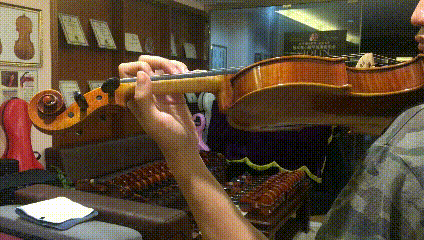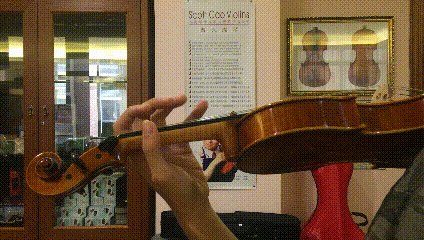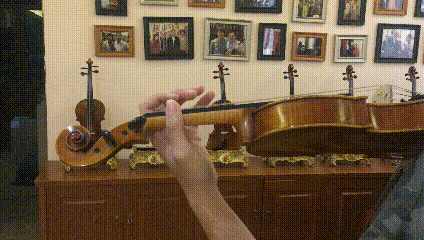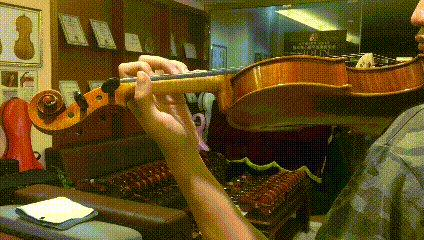When playing the violin, no matter what the bowing method, the pronunciation must be clean and clear and the tones and tones should be clearly distinguishable. Especially fast playing can not be sloppy. Failing this, there may be problems with the left hand.
To improve left-handed skills, the following left-handed principles should be paid attention to. Use these principles to check the piano practice and guide the piano learning methodologically. Everyone's specific situation is different, I hope these views and methods of mine will be helpful to the piano friends.
1. The principle of reserved fingers: The reserved fingers are important in the performance of pitch, hand shape, assisting the weak fingers, simple movements and convenient performance. Beginners should pay attention to the principle of reservation.
2. The principle of hand shape, finger shape and palm shape adjustment: Since each finger on the handle can have three different phonemes, when you come into contact with these phonemes, the hand shape, finger shape and palm shape should also be different. You can't be the same and find it hard to suffer.
3. The principle of not retaining the same finger in different positions: This should be used when the sound before and after the same finger changes, that is, the finger is the same, but the sound is different. When the melody is in progress, when the same finger is in different positions before and after, after we finish playing the note, we must immediately lift the finger in order to prepare to press the finger again, because although the finger is the same, the front and back are two different the phoneme, so it must not be reserved, otherwise it will cause negligence. Or the tone is inaccurate, the two tones are unclear, and the performance is slow.

4. The overall linkage principle of finger lift: the lift of the finger is reserved, sometimes it is single, sometimes it is multiple fingers. When a note goes up, there is a small bounce back, if not all, to reduce confusion. But a more effective method is to use the reserved fingers to lift the overall linkage action. That is, when a certain finger is lifted up, one of the low positions is reserved, or several are lifted simultaneously. Raising the fingers is powerful and decisive for the overall linkage, and there must be no time difference. Kaisai Etude NO.15, the middle part of the bow section. It is the whole joint exercise of raising the fingers. Usually, the stumbling and stumbling of some fast melody performances is that they do not pay enough attention to this kind of practice, and the skills are not enough.
5. Two-part contact regulation principle: This is very important. That is, the contact point between the left hand and the piano, always maintains two parts, and the rest are distant. Choose between the thumb, the base of the index finger, the tip of the finger, and the left palm. This choice is at any time and free, and it is not allowed to force several parts to contact with force, nor point contact, or zero contact.
The left hand, which is in contact with two points, is more comfortable and flexible, and is more suitable for various tuning requirements. It is necessary to say the following about the two-point contact: when the slightly faster note is played, it appears to be a three-point contact. According to the switching of the fingers, the interval of the open string sounds requires the cooperation of the root of the index finger or other parts of the hand (in the high position). Because the switching is too fast, it almost becomes three contacts. This class should be a light touch on the skin surface, and we should define this phenomenon as a special two-point contact.
We might as well play this kind of melody at a slower speed, and the two-point contact will be obvious. Only two points of contact, pressing the finger can make subtle timbre-assisting movements. On the basis of touching the piano with the base of the thumb and index finger, some junior students do not know this principle and do not know how to adjust when there is a three-point imbalance when pressing the strings with individual fingers. There is also a little contact in the practice, and the result is that the position is lost and the tone is lost.
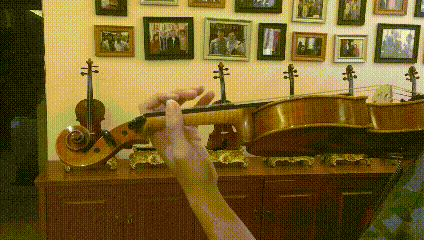
6. The principle of vertical and horizontal: the so-called vertical is to stretch, tighten the fingering, and stretch to maintain the position. Austerity can be pointless. The so-called horizontal is to press the double strings with the same finger, or to move between the four strings by pressing the finger. The horizontal requirement is the rudder-like action of the left elbow. Practice the horizontal accuracy without shifting, and press the finger strings freely.
7. The principle of relaxation and rest: relaxation is relative, completely relaxed, and nothing can be done. We need to use the moment of performance to relax in varying degrees. In this way, the whole hand can always be in a flexible and maneuverable state. Relaxation in playing is by no means rest in piano practice. It means far more than rest. People often say: If you don't rest, you won't work. If you don't relax, you won't play the piano.
8. The principle of strength level: This point can best explain relaxation, maneuverability, and trial and error. In each part of the left hand, only the pressing finger is the first power level in their respective movements. The rest of the thumb, the base of the index finger, the wrist, and the palm should clearly feel a low level of strength. We should obviously feel that the force of the finger pads is much greater than that of other parts of the hand. This principle is applied to the right hand, that is, the contact point of the bowstring ponytail and the string is the first power level, and other parts must not be surpassed.
